
Politics
13:59, 06-Oct-2018
State of the Race: US midterms 2018, one month out
Updated
13:02, 09-Oct-2018
By John Goodrich
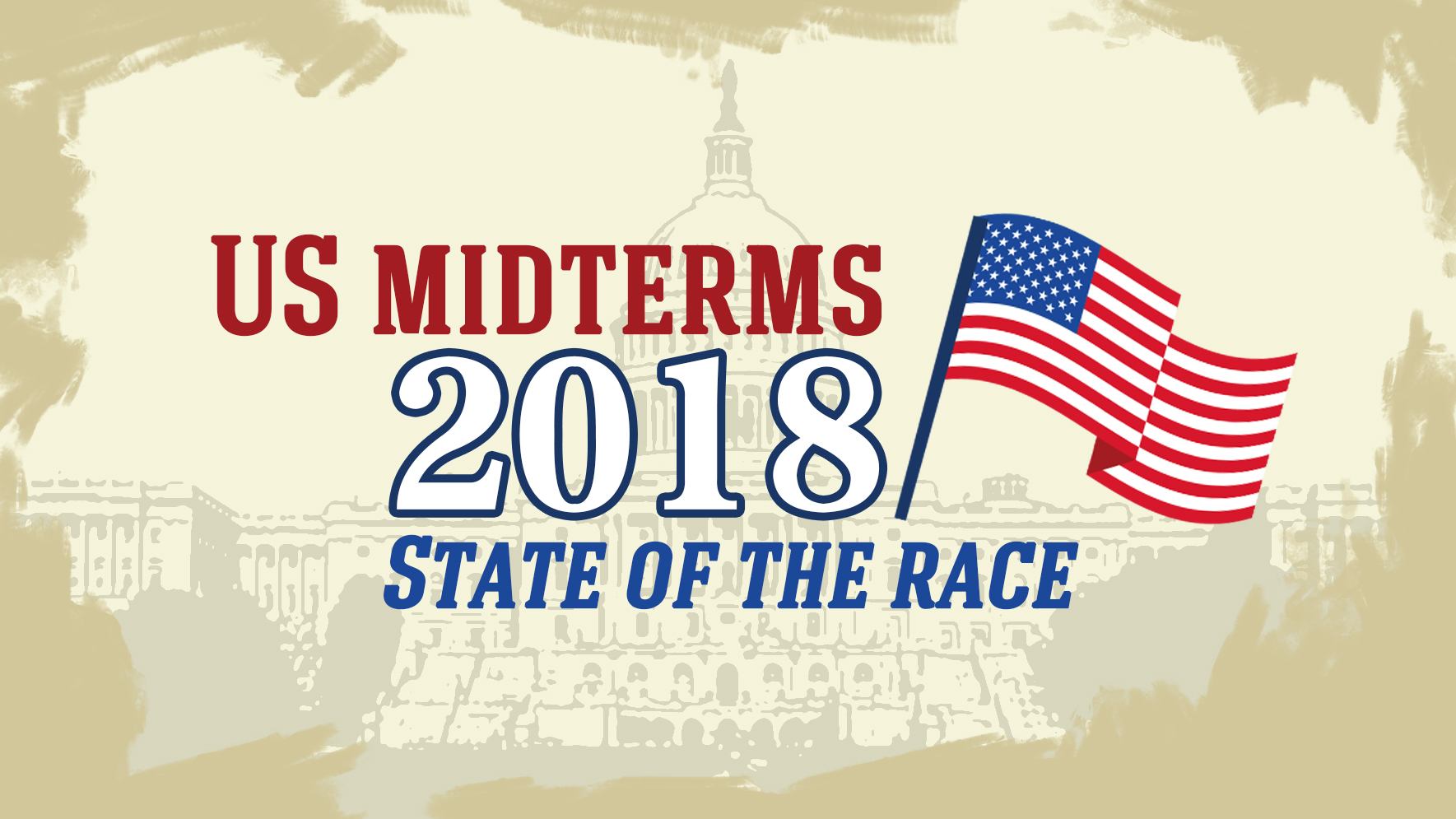
The US midterm elections, which could charge or nullify the Trump presidency, are one month away.
Over the next 31 days, candidates, including a record number of women, will contest all 435 seats in the House of Representatives, 35 Senate seats and 36 governorships.
The Republicans currently hold the presidency, the Senate and the House. If the party retains control of all the three organs after the November 6 elections, it will be seen as a green light for the Trump administration and its policies.
But if the Democrats were to take one or both houses of Congress, the dynamics of the next two years would change dramatically for the White House. Democrats would decide which bills come to the floor and take control of committees, as well as likely launch investigations into Trump and vote down cabinet or court nominees.
Races
House of Representatives
All 435 seats are up for election in the House, where the Republicans currently hold a 235-193 majority (seven seats are vacant). To take control of the House, the Democrats need a net gain of 23 seats.
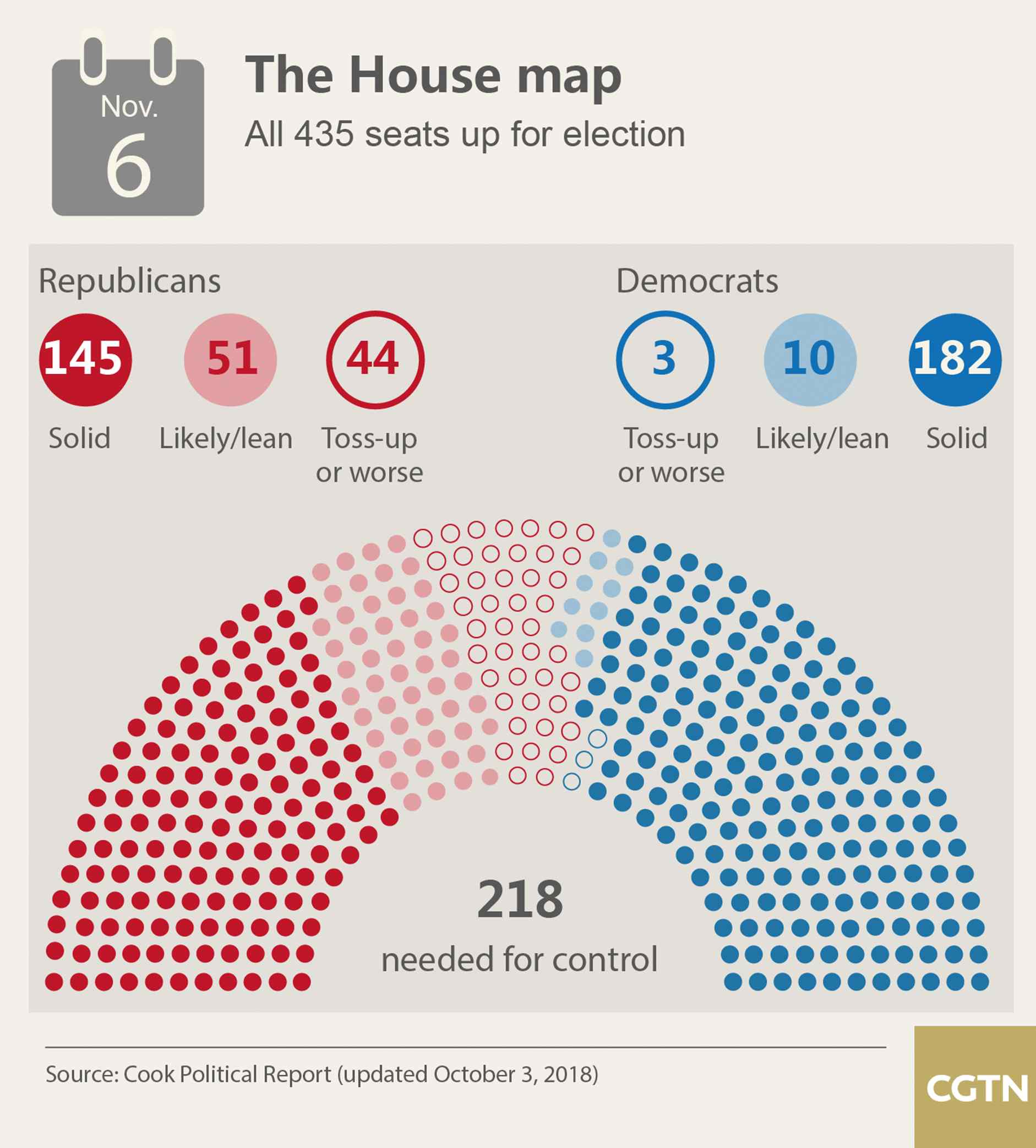
The latest update from The Cook Political Report indicates that 44 Republican-held seats are toss-ups, and a further 51 are competitive. Only three Democratic seats are toss-ups and 10 more are considered competitive.
FiveThirtyEight's latest forecast gives the Democrats a 73.9 percent chance of winning control, and the Republicans a 26.1 percent chance of retaining a majority.
Current trends suggest: DEMOCRATIC MAJORITY
Senate
Thirty-five seats are up for grabs in the Senate, where the Republicans hold a slim 51-49 advantage. The Democrats only need two seats to take control of the chamber but the Republicans are in the box seat – they are defending nine seats and attacking 26.
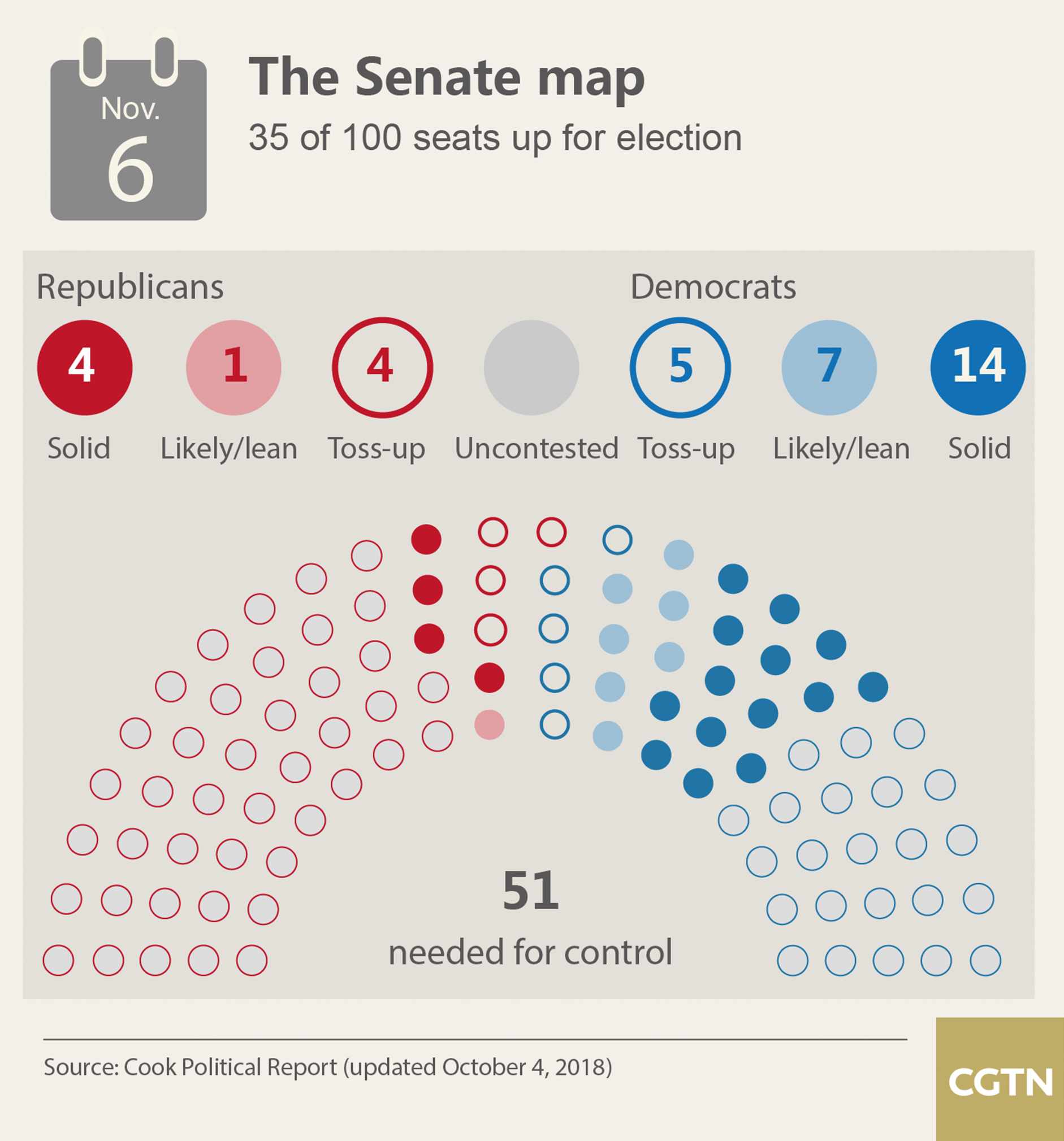
The latest update from The Cook Political Report indicates four of the nine Republican-held seats are toss-ups, and five of the 26 Democrat-held seats fall into the same category. A further three Democrat seats are considered competitive.
FiveThirtyEight's latest forecast gives the Democrats a 22.0 percent chance of winning control, and the Republicans a 78.0 percent chance of retaining a majority.
Current trends suggest: REPUBLICAN MAJORITY
Gubernatorial
Thirty-six state governor's mansions are being contested in 2018, 26 of which are currently held by Republicans, nine by Democrats and one by an independent.
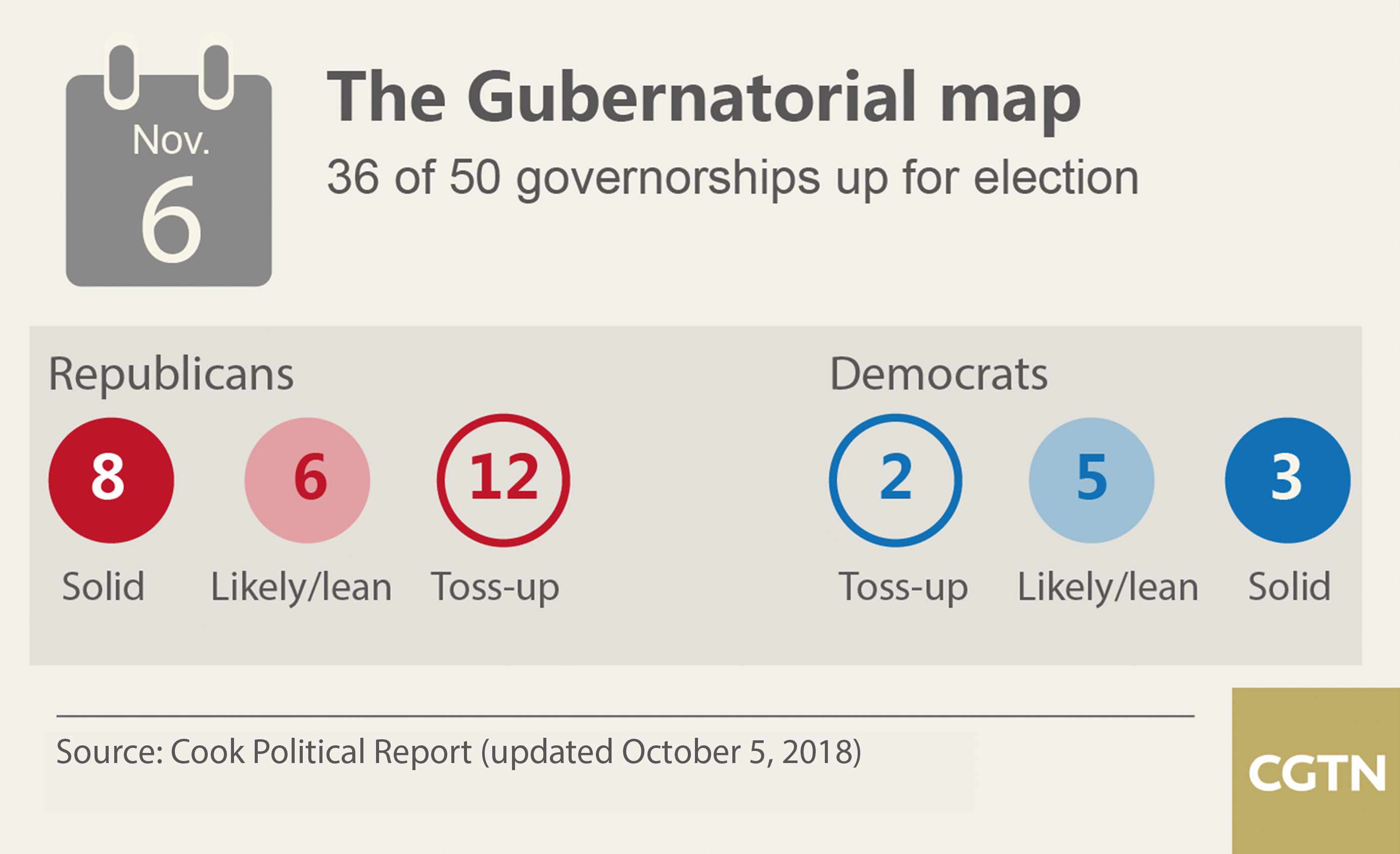
The Republicans currently hold 33 governorships, so 2018 is an opportunity for the Democrats, who are defending two toss-up governorships to the Republicans' 12 according to The Cook Political Report, to hit back.
The gubernatorial races have no direct impact on the White House, but will be seen as indicators ahead of the 2020 presidential election. And governorships are hugely significant jobs: whoever wins in Florida, for example, will take charge of a one trillion US dollar economy.
Indicators
Generic ballot
The generic congressional ballot is an indicator averaging how people say they would vote in an election, irrelevant of district or state.
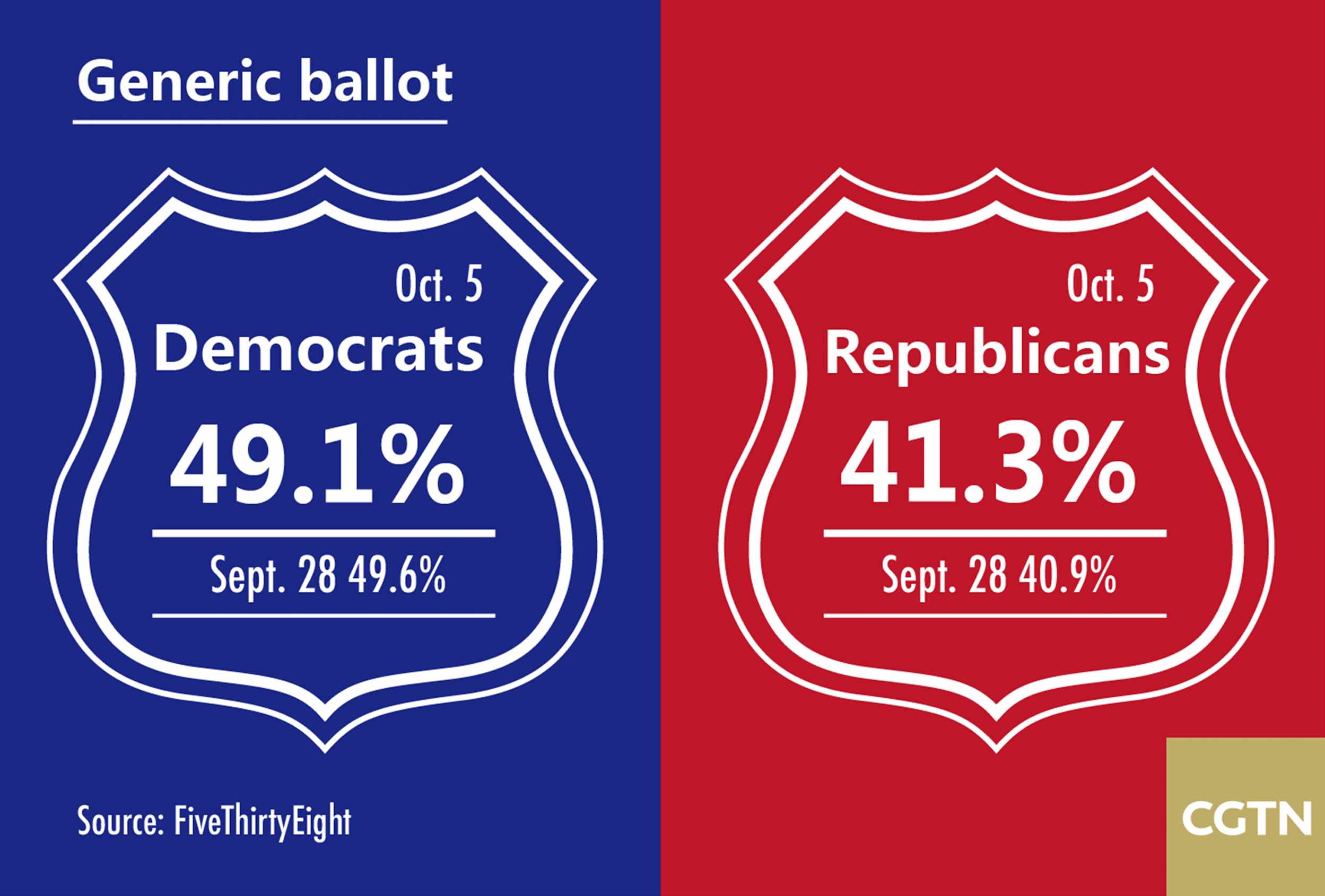
The individual November 6 races differ massively, so the generic ballot is only a loose indicator. CNBC analysts say a 12-point gap would probably lead to a "blue wave" – Democratic victories in both houses of Congress – while a six- to seven-point margin would be needed to take just the House.
The latest calculation from FiveThirtyEight puts the Democrats 7.8 points ahead of the Republicans with 49.1 percent to 41.3. However, that gap has narrowed in recent weeks.
Presidential approval
Donald Trump isn't on the ballot on November 6, but midterm elections are a referendum on the sitting president – and that president's party nearly always suffers a net loss.
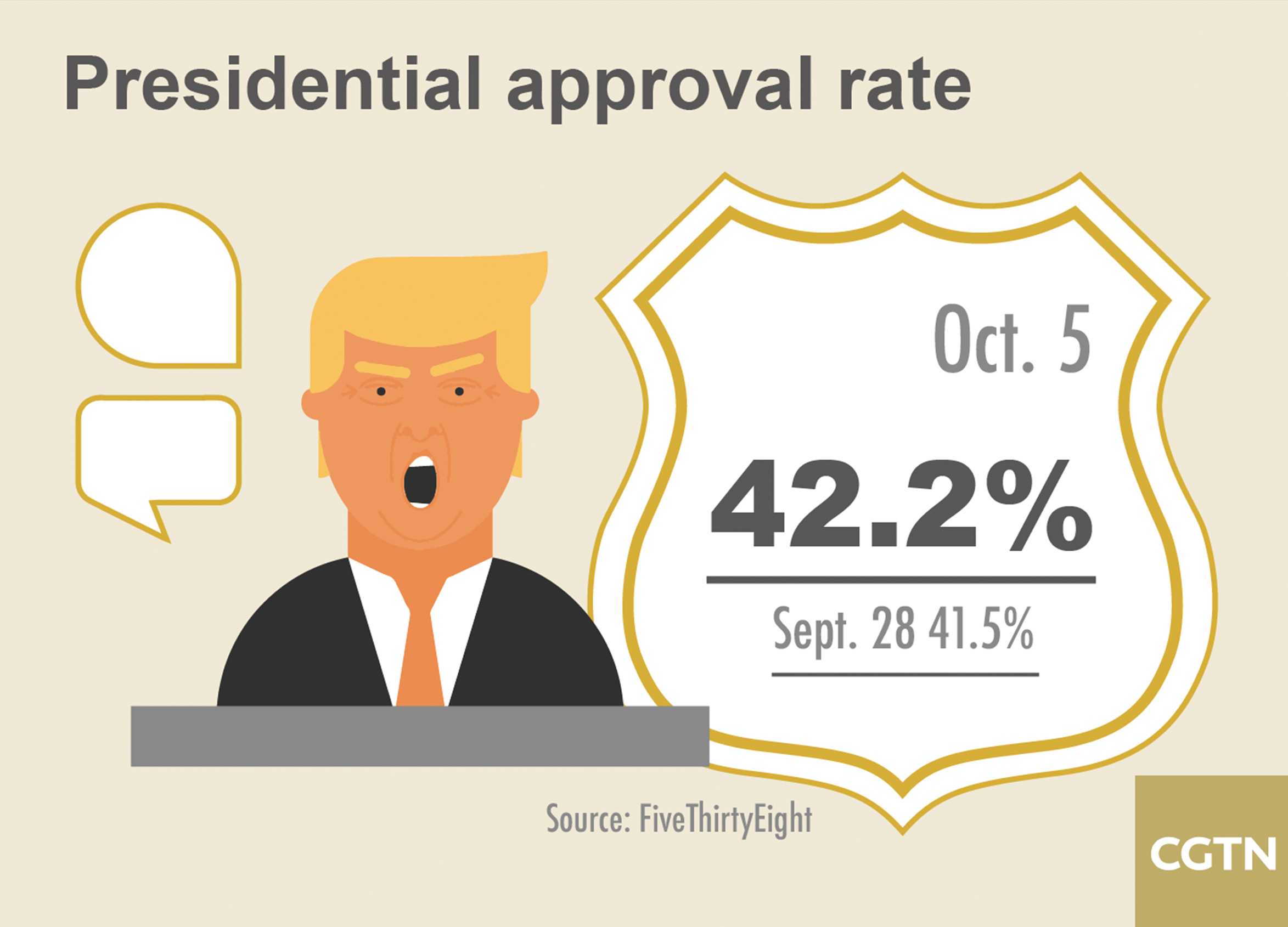
Trump's approval rating of 42.2 percent on Oct. 5, according to a FiveThirtyEight calculation of multiple polls, is close to his highest since March 2017 – but still very low by historical comparison.
Gallup's polling history shows that the presidents with approval ratings of below 50 percent have seen their party lose an average of 37 House seats in midterms.
The Democrats lost 63 House seats in 2010, when Barack Obama's approval rating was 45 percent. With Ronald Reagan's approval rating at 42 percent in 1982, the Republicans lost 29 House seats.
Turnout
Turnout is traditionally low in midterm elections, averaging around 40 percent, which is about 20 points lower than in presidential election years.

Fewer voters means getting the base to the ballot box is ever more important for both parties. In the 2014 midterms, only 35.9 percent of eligible adults voted, but polling suggests in 2018 the surprise ticket for turnout – one month out – is the saga over the confirmation of Brett Kavanaugh as a Supreme Court justice.
A new NPR/PBS NewsHour/Marist poll indicates that the Republican base is increasingly likely to vote: a 10-point enthusiasm deficit with Democrats in July dropped to two points at the beginning of October.

SITEMAP
Copyright © 2018 CGTN. Beijing ICP prepared NO.16065310-3
Copyright © 2018 CGTN. Beijing ICP prepared NO.16065310-3